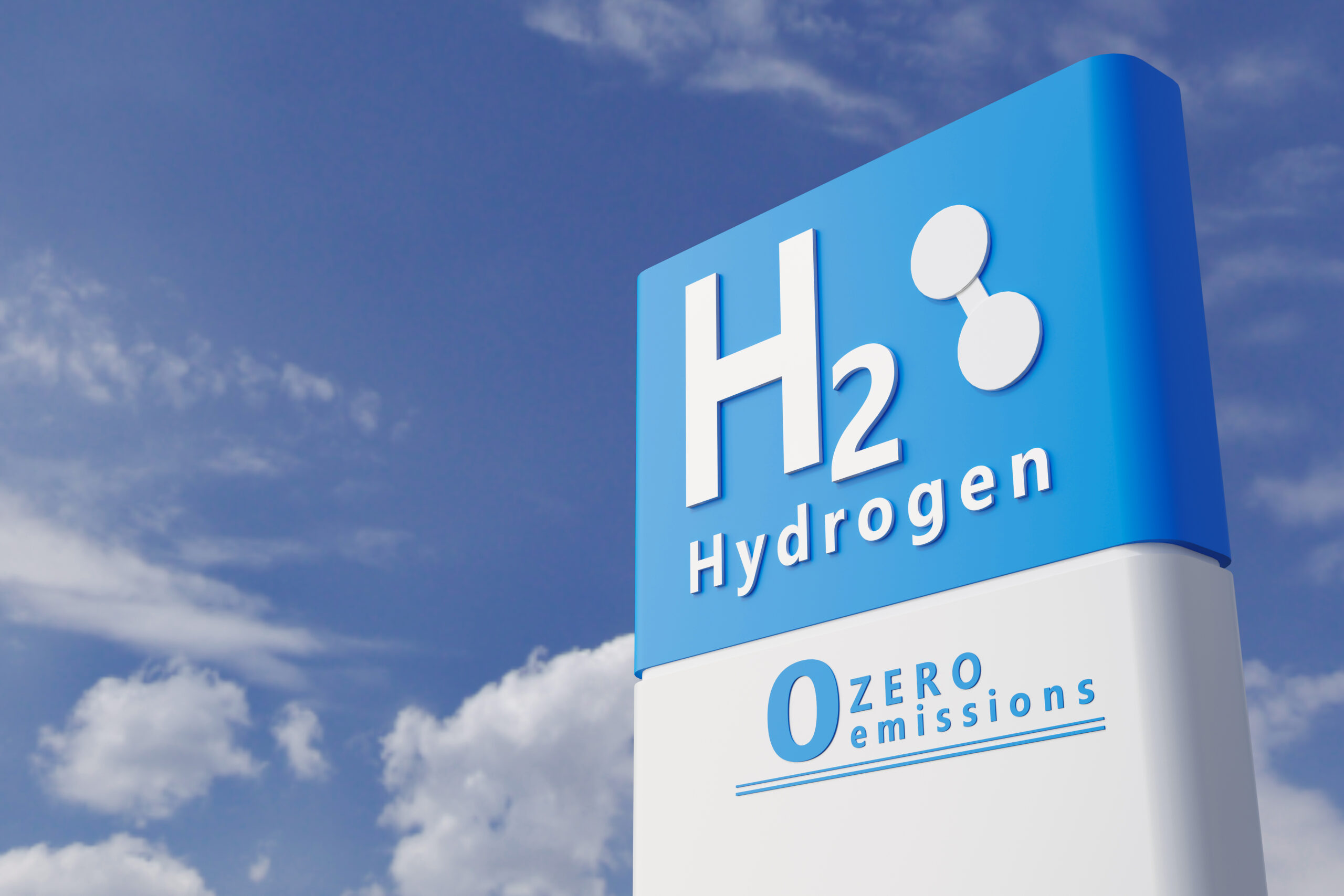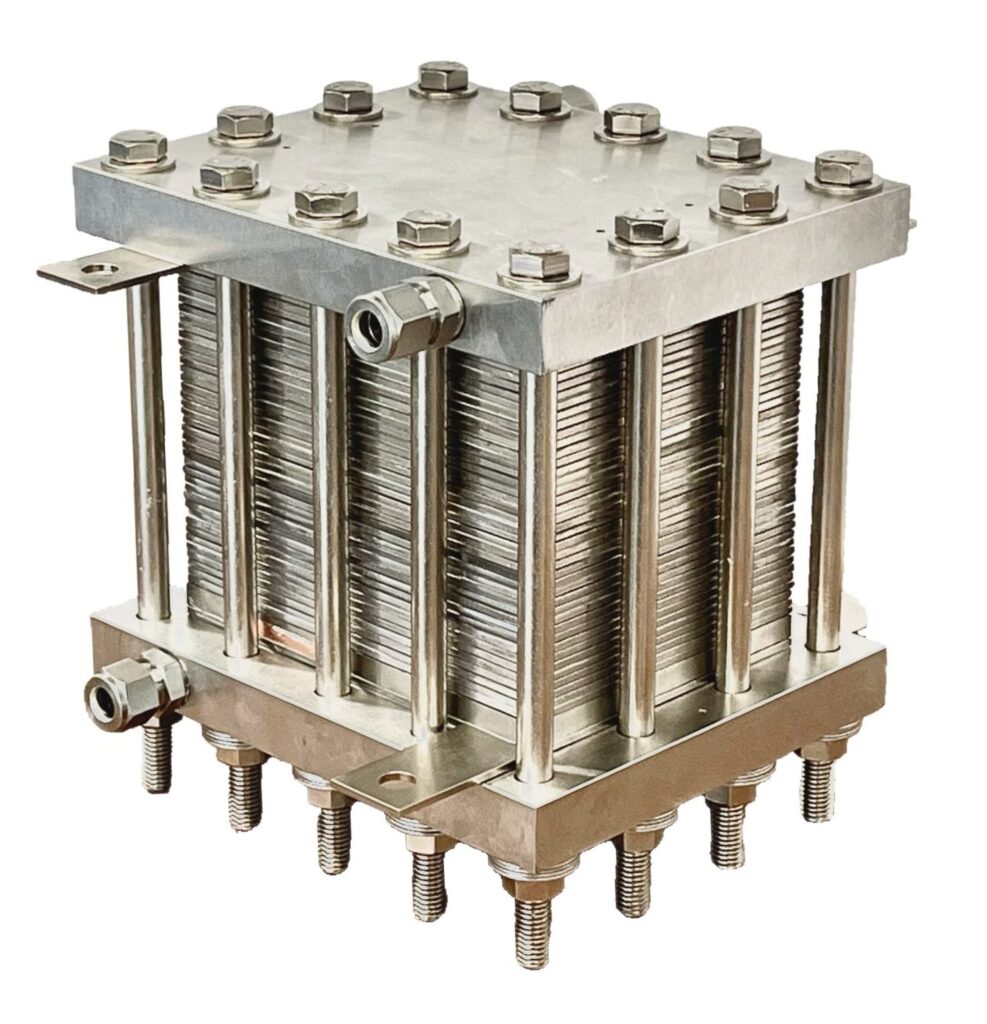
The AEM Electrolyser

Anion Exchange Membrane (AEM) electrolysis stands out as the cutting-edge technology for green hydrogen production. In this process, the Anion Exchange Membrane facilitates the passage of negatively charged hydroxyl ions (OH-) while impeding positively charged ions (H+). The confined protons (H+) combine to form green hydrogen gas on the cathode side, while hydroxyl ions (OH-) on the anode side create water and oxygen gas. The advantages of Anion Exchange Membrane (AEM) electrolysis extend beyond traditional Proton Exchange Membrane (PEM) and Alkaline electrolysis technologies.
Cipher Neutron’s AEM electrolysers distinguish themselves by eliminating the use of Platinum Group Metals (PGMs) such as Platinum, Iridium, and Ruthenium, commonly found in PEM electrolysers. The high cost and unsustainable nature of green hydrogen production in PEM electrolysers stem from the expensive, supply chain-constrained, and scarce nature of these metals. By removing the dependence on Platinum Group Metals and incorporating a unique electrolyser design and ink recipe, Cipher Neutron achieves a reduction in both capital and operating costs. Moreover, Cipher Neutron’s AEM technology electrolysers achieve higher current density with significantly reduced amounts of corrosive electrolytes compared to other traditional technologies. This innovation not only enhances efficiency but also contributes to a more sustainable and cost-effective approach to green hydrogen production.
PFAS Free Technology
Indeed, recent attention on PFAS has added an extra layer of complexity to the challenges faced by the green hydrogen industry. PFAS, associated with detrimental health effects such as cancer, birth defects, kidney failure, and other chronic illnesses, has raised significant concerns. Numerous studies have underscored the adverse health impacts of PFAS exposure, particularly emphasizing the vulnerability of developing fetuses, infants, and children.
Compounding the issue, the pervasive nature of these chemicals is evident as they have been detected in the blood of 99% of Americans tested for them. This widespread presence emphasizes the urgent need for alternative technologies and practices in the green hydrogen sector to mitigate environmental and health risks associated with PFAS, ensuring a safer and more sustainable future for the industry.
The potential health impacts of PFAS have become a significant public concern, particularly within the drinking water industry. A recent 2023 study revealed that more than 45% of tap water in the United States was contaminated with toxic PFAS materials. In the context of the green hydrogen industry, PEM electrolysers utilize membranes composed of PFAS (polyfluoroalkyl substances or forever chemicals) materials. These PFAS materials are associated with severe health risks, including cancer, birth defects, and kidney failure, among other health-related issues. Complicating matters, some of these substances can persist in the environment for thousands of years.
The global response to these concerns is palpable, with entities such as the European Union, the United States of America, and many other governmental bodies contemplating the prohibition of certain PFAS materials. Such potential regulatory actions are poised to impact the supply chain of the already challenged PEM electrolyser industry, prompting a reevaluation of materials and technologies in the green hydrogen sector to align with environmental and health safety standards.
Technology Comparison
| Alkaline | PEM | AEM | |
| Ampacity | Low | High | High |
| Catalyst | PGM Free | PGM Based | PGM Free |
| CAPEX | Low | High | Low |
| H2 Pressure | Low | High | High |
| System Response | Slow | Fast | Fast |
| Maturity | Mature | Mature | Latest |

AEM Applications

Chemical Industry

Energy Sector

Mining Industry

Steel Industry

Fuel Station
“Believe in Cipher.”